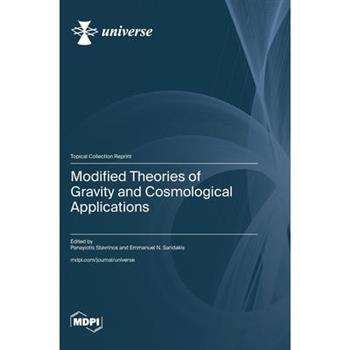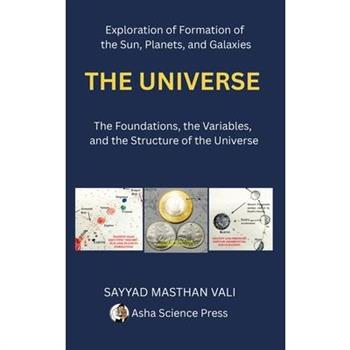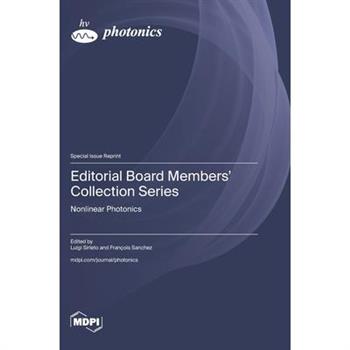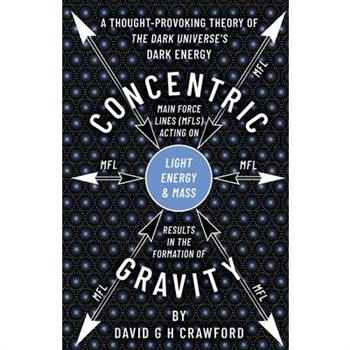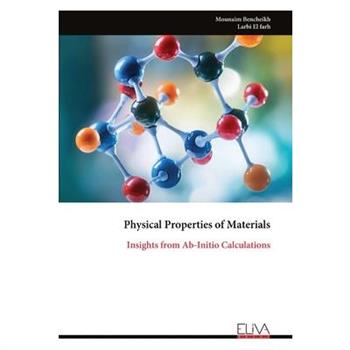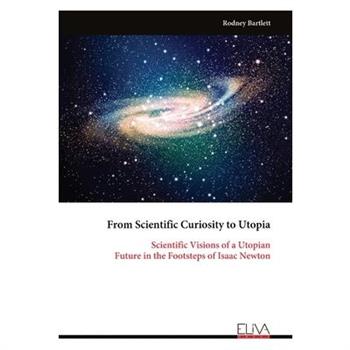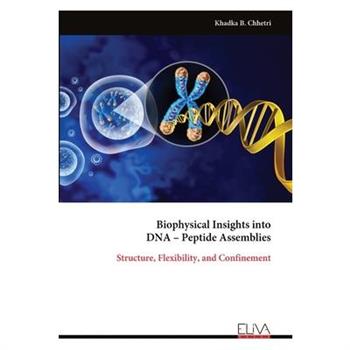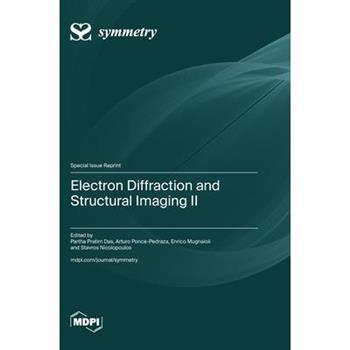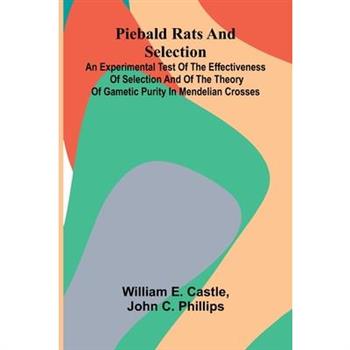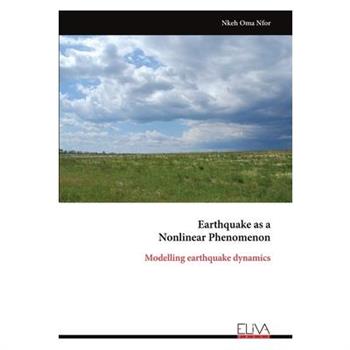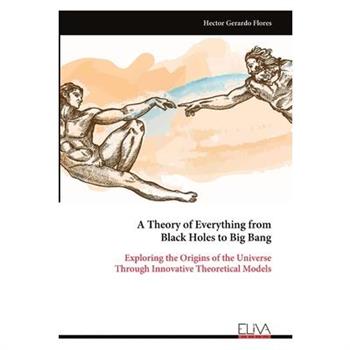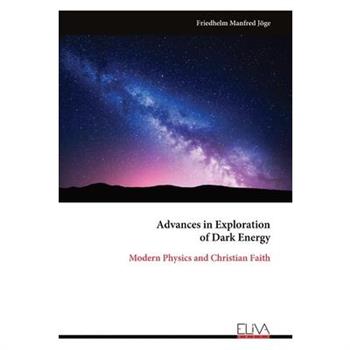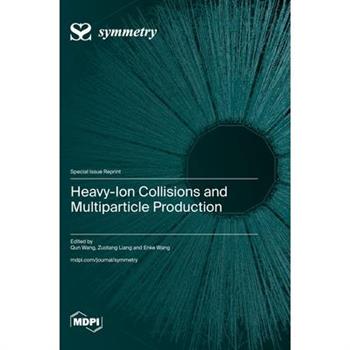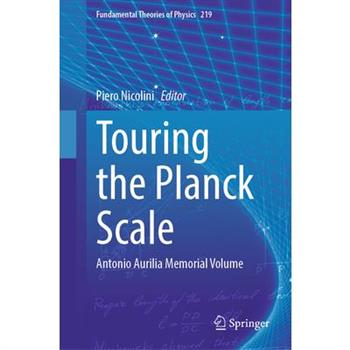The Starspotter's Guide
It was a story about space - Apollo 13 - which first hooked Sheila Kanani, and now, decades later, after achieving a PhD in Saturn's magnetosphere and working as an outreach officer for the Royal Astronomical Society, she has made a career of weaving together the science and tales of the stars. In The Starspotter's Guide, her first book for adults, Sheila pulls together the rich tapestry of the night sky for the armchair stargazer, sharing the stories that cultures across the world have told about the stars for millennia - and how these have shaped our exploration and understanding of the Earth, from astrologers in ancient India using the stars to calculate the length of the year, to Polynesian explorers using them to navigate far beyond their homes. And now, as our knowledge expands about the endless expanse above us - such as what the stars actually are - Sheila takes us on a journey through what you'd see if you could jump on a spacecraft and explore these galaxies yourself. In this endlessly informative and persuasively interesting miscellany of the night sky, Dr Sheila Kanani takes us on a journey through the cosmos and through the human experience of the stars throughout the ages that will have you rushing outside and looking up, searching for the curve of the Milky Way.
Crush
The fascinating story of gravity, from its intimate role in our daily lives to its cosmic significance. Gravity is at once familiar and mysterious. It's the reason for the numbers on your bathroom scale, the intricate dance of the stars and planets, and the evolution and eventual fate of the universe. In Crush, James Riordon takes readers on a tour of gravity from its vanishing insignificance on the microscopic scale to its crushing extreme inside black holes. From the moment we lift our heads as infants until the moment we lie down and ultimately surrender to its pull at the end of our lives, we labor under the burden of gravity. It has guided the shape and structure of our bodies over eons of evolution and sculpted the Earth as it cooled from a blob of molten rock. As Riordon explains, the stars couldn't shine without gravity holding them together. Even the atoms that form you and everything around you were forged in stellar furnaces that gravity built. It took Einstein to realize that gravity is not, in fact, a force at all, but instead the curvature of space and time. A fascinating and memorable read, Crush examines our personal relationships with gravity, explores gravity's role in making the universe uniquely hospitable for life, and even reveals how the mundane flow of water in your kitchen sink offers a glimpse into the secrets of black holes.
View from Above 2026 Wall Calendar
EARTHLY ARTWORK - View From Above 2026 showcases the planet's most mesmerizing landscapes captured by aerial photography, revealing stunning patterns of rivers, deserts, coastlines, and cities. Each month offers a new perspective that transforms nature and civilization into abstract masterpieces.
Entropy
Very Short Introductions: Brilliant, Sharp, Inspiring Until the middle of the nineteenth century entropy and energy were confused with one another. The intellectual fog slowly cleared and now these words name subtle and powerful concepts. Most people think they know what energy is, but few could define entropy. This Very Short Introduction traces the emergence of entropy and energy as distinct concepts, and explains how entropy spread from thermodynamics into statistical mechanics, probability theory and data science. It explains the implications of entropy for heat pumps, solar cells, carbon capture, and liquified natural gas. Quantum mechanics and gravity open new horizons for entropy, and when combined in the quantum theory of black holes, they call into question our current understanding of material reality. ABOUT THE SERIES: The Very Short Introductions series from Oxford University Press contains hundreds of titles in almost every subject area. These pocket-sized books are the perfect way to get ahead in a new subject quickly. Our expert authors combine facts, analysis, perspective, new ideas, and enthusiasm to make interesting and challenging topics highly readable.
Chemistry and Energy
The processes and materials behind energy technologies: The author details the underlying chemistry of renewable sources, such as biofuels and wind power, as well as the traditionally used coal and gas. Chapters on energy storage technologies and the connection between energy generation and climate change round off this uniquely concise overview of the relationship between chemistry and energy.
Conjuring the Void
An evocative and richly illustrated exploration of modern art about black holes. Inescapable and mysterious, black holes have long captured the imagination of visual artists, even before their existence was first confirmed in 1971. In Conjuring the Void, Lynn Gamwell explores this fascinating intersection of art and science. Starting with a chronological description of key developments in the science of black holes, Gamwell builds a foundation for the reader through visualizations of black holes created by scientists, depicting how a black hole's extreme gravity affects visible objects in its vicinity. From there, the book explores how artists have addressed the challenge of visualizing black holes by developing new methods of working with diverse materials, including a black paint that absorbs 99.96% of visible light. Gamwell looks at how certain themes within the science of black holes--nothingness, emptiness, darkness, void, silence--are prominent in traditional Eastern thought traditions as well as in modern abstract art. She also considers the work of contemporary artists such as Anish Kapoor, Olafur Eliasson, Takashi Murakami, and Danh Vō, and discusses how they have explored these themes and more in their artworks. The book concludes with a look forward, describing dramatic developments in the imagery of black holes and their changing influence on visual culture.
Just Visiting This Planet, Revised and Updated for the Twenty-First Century
From Neil deGrasse Tyson, #1 New York Times bestselling author of Astrophysics for People in a Hurry, comes a spirited journey to the planets and stars, revealing the answers to many mysteries of our galaxy and beyond.In this companion volume to Merlin's Tour of the Universe, we visit again with Merlin, a timeless traveler from Planet Omniscia, who answers a collection of imaginative questions about the cosmos from curious stargazers. Whether waxing poetic about Earth and its environs, the Sun and its stellar siblings, physical laws, or galaxies near and far, Merlin's remarks are witty, humorous, and clear as a starry night sky.Merlin tackles such conundrums as: If aliens exploded Earth's moon, what effect would it have on us?Are black holes gathering matter in preparation for another big bang in another time and dimension?Why does the Moon look bigger on the horizon?Accompanied by the playful illustrations of Stephen J. Tyson, Just Visiting This Planet is a lively, entertaining, and indispensable guidebook to the universe.
The Pale Blue Data Point
A thrilling tour of Earth that shows the search for extraterrestrial life starts in our own backyard. Is there life off Earth? Bound by the limitations of spaceflight, a growing number of astrobiologists investigate the question by studying life on our planet. Astronomer and author Jon Willis shows us how it's done, allowing readers to envision extraterrestrial landscapes by exploring their closest Earth analogs. With Willis, we dive into the Pacific Ocean from the submersible-equipped E/V Nautilus to ponder the uncharted seas of Saturn's and Jupiter's moons; search the Australian desert for some of Earth's oldest fossils and consider the prospects for a Martian fossil hunt; visit mountaintop observatories in Chile to search for the telltale twinkle of extrasolar planets; and eavesdrop on dolphins in the Bahamas to imagine alien minds. With investigations ranging from meteorite hunting to exoplanet detection, Willis conjures up alien worlds and unthought-of biological possibilities, speculating what life might look like on other planets by extrapolating from what we can see on Earth, our single "pale blue dot"--as Carl Sagan famously called it--or, in Willis's reframing, scientists' "pale blue data point."
Violations of Hyperscaling in Phase Transitions and Critical Phenomena
This Special Issue was initiated by Prof. Ralph Kenna (August 27, 1964-October 26, 2023), who, at the time, was a member of the Entropy Editorial Board and it is dedicated to his memory. Universality is a striking feature of critical phenomena, and its origin is largely illuminated by the renormalization group. Universality allows for the essential aspects of critical behaviour in complex physical systems to be captured through highly simplified models, where only key components such as spatial dimensionality, symmetry, and interaction range are retained. Both theoretical models and real systems are thus grouped into universality classes, which are characterised by sets of critical exponents connected through scaling relations. When these relations explicitly involve dimensionality, they are referred to as hyperscaling. In many systems with a high degree of connectivity, mean-field theory provides accurate predictions independently of spatial dimension, leading to the common assertion that hyperscaling breaks down in such cases. However, this conventional view has been reconsidered in light of recent renormalization group developments, which suggest mechanisms by which hyperscaling might be preserved in an extended version even above the upper critical dimension. The contributions collected in this reprint address these issues, focusing on scaling properties beyond the upper critical dimensionality as well as related challenges in the broader theory of phase transitions and critical phenomena.
50 Things to See with Binoculars (in Space)
Explore the universe from your own backyard!Embark on an awe-inspiring journey through the cosmos with just a pair of binoculars. 50 Things to See with Binoculars (In Space) is your ultimate guide to exploring stars, galaxies, and nebulae right from your backyard. Whether you're a beginner or a seasoned stargazer, this book makes navigating the night sky easy and rewarding.Inside, you'll find: 50 breathtaking celestial targets to discoverEasy-to-follow star maps for every object, helping you find your way across the heavens"Binocular View" images, so you'll know exactly what to expect as you exploreTips and techniques to make the most of your stargazing adventuresPerfect for every backyard astronomer, this guide turns the night sky into a treasure trove of wonders waiting to be found. With 50 Things to See with Binoculars (In Space), the universe has never been closer--or easier--to explore.
Recent Advances in Energy Materials
In recent days, "Recent Advances in Energy Materials" should attract researchers as well as academicians not only for academic interest but also for their various applications in electronic devices, wave guides, photonics, sensors and many other fields. Rapidly growing global energy demands, limited reserves of fossil fuels and associated environmental concerns, the intermittent nature of alternating energy sources, the limited efficiency of existing energy conversion systems-these are the challenges that society faces today. Advanced materials are the key elements in the development of improved high-efficiency, low-cost, clean energy technologies. The section "Energy Materials" is a platform for the publication of original articles and comprehensive reviews on all aspects of fundamental science and applied research on materials used for harvesting, conversion, storage, transmission, and utilization of energy. In the present book, some experienced researchers in the said field have spontaneously taken initiative to contribute the basics of such energy materials and their various applications in various devices and components etc. This book covers vivid information on recent developments and future scopes of such systems, such as electrical, optical properties, uses as electrodes, photonics, battery applications and others, which are of great interest for material researchers. Each chapter is designed in order to increase coherence, with each including question sets as exercises for in-depth understanding of the text. Key Features: # Provides up-to-date information on various energy materials such as perovskites, glassy materials, Hydrogen-based system, oxygen-defect based systems etc via experimental work and literature survey. # Presents the future scopes of such systems for researchers, technologists as well as university level students.
Seven papers put Elementary Particle Physics and Cosmology Back on the Right Track
During the last century (1900-2000), Physics and Cosmology have made great progress, a progress so great that it has surpassed the total progress of the entire previous millennium (1000-2000). However, along with the enormous progress that has been achieved, many questions have also been created that need to be answered in order to establish this progress. The answers to the questions that have been created, have been undertaken to be studied by established science, displacing all the small independent researchers whose opinions, even if correct, if they are opinions different from the established opinions, are automatically rejected without being studied or be taken into account. As an example, I mention the opinions that I describe in this book, which although they have been published for several years, established science has ignored them. However, if we analyze the answers that have been given by established science to the questions that needed to be answered, we will notice that, after the discovery of the up and down quarks, in the decade (1970-1980), which together with the electron were considered wrongly, as elementary particles, many other incorrect answers were given. These answers result a great confusion that have taken, Physics and especially Theoretical Physics of the elementary particles, and Cosmology, out of the correct development trajectory. I believe that the careful study of this book will help Physics and Cosmology leading them back to the correct path of development.
Earthquake as a Nonlinear Phenomenon
This book is written for a wide readership of Physicists, Mathematicians, Geologists and Geographers. Basic concepts of earthquake are highlighted and captured in mathematical equations. In fact, earthquake is the sudden release of energy in the earth's crust, resulting into violent vibrations. The use of of linear mathematical theory is quite limited for a comprehensive analysis of earthquake dynamics. Consequently, the modelling of earthquake phenomenon based on nonlinear mathematical equations give us the leverage of predicting its occurrence and minimizing the risks on the vulnerable population. This scientific work equally elucidates on the sudden appearance and disappearance of oceanic rogue rogue waves, based on the Burridge-Knopoff earthquake model. The impact of magma up flow on the evolution of seismic wave is brought into sharp focus. A practical application of earthquake model to automobile brake system is highlighted, in order to further explain on the elusive problem of disc brake squeal noise.
A Theory of Everything from Black Holes to Big Bang
Here, we will demonstrate the origin of the universe, the origin of cosmic inflation, the origin of dark matter, the origin of dark energy, the discrepancy between matter and antimatter, the quantization of gravity, the quantization of matter, the quantization of space-time and finally the union of Albert Einstein's theory of general relativity with the theory of quantum mechanics. Based on the above, using the Maldacena ADS/CFT correspondence; we will write a theory of everything (T.O.E.). In order to achieve our objective, we will be based on the development of three theories that we will describe below that will be the fundamental bases or pillars in our development. -RLC electrical modelling of black hole and early universe. -Generalization of Boltzmann's constant in curved space-time. -Electrical-quantum modelling of the neutron and proton as a three-phase alternating current electric generator.
General Definition of the Rest Energy
If the rest mass of a sub-atomic particle, according to the famous Einstein equation, is described by its own electromagnetic energy then can we describe a community of these particles by a similar equation? By other words: can we describe a very dense colony of these sub-atomic particles by zero kinetic energy, such that the electromagnetic energy, the quantum term and the gravitational potential are all equal zero? This research discuses this question and surprise answer was: yes we can. I found the evidences of this answer in the primordial universe and the early solar system. In this book you can fined: 1- Alternate relativistic relations 2- Alternate solution for the light elements abundance 3- Alternate origin for the solar system. I found that the current orbitals and physical properties are matching perfectly with my theory.
Dielectric Properties of low sintering temperature Bismuth titanate - Bi4Ti3O12 nanoparticle
For your youngster, discover the magic behind the pages and open them a world of possibilities. ""Dielectric properties of low sintering temperature Bismuth titanate nanoparticle"" is an eloquent investigation of the significant influence that reading has on research and development towards nanoparticles. In your role as a parent or guardian, you have the power to change a younger on life by encouraging creativity, empathy, and a passion for learning through research. As you flip each page of this captivating book, discover the simple learning towards the dielectric powder technology. Every tale told is a step towards creating a better future, from encouraging creativity to teaching fundamental life values. Join us on this engrossing journey as we explore the literary world and discover the limitless possibilities that a single book may provide.
Advances in Exploration of Dark Energy
The presented book provides contributions about dark energy. This leads to the discovery of a new law of nature. Also it presented contributions about the nature of time. Also it presented the current state of knowledge about the relationship between faith and science as well as natural laws from a scientific and biblical perspective.
A Guide to the Night Sky
Explore the wonder of the eighty-eight constellations in our universe through this beautifully illustrated guide. Across human cultures and history, we have looked up to the heavens and discovered the stars, from the well-known Aries Orion to the lesser-known Volans and Triangulum. Each cluster of stars has its own story, both mythic and scientific. With A Guide to the Night Sky, learn practical tips on how to view the skies (with and without telescopes), then put them into action to start your stargazing journey. Read about the first stargazers and how they have been interpreting the constellations for thousands of years. Take a crash course in the galaxy and learn about deep-sky objects of all varieties. Then settle in to discover the eighty-eight officially recognized constellations and learn about their lore, size, location, and all about their brightest stars.
Heavy-Ion Collisions and Multiparticle Production
Quantum chromodynamics (QCD) is the fundamental theory for the strong interaction between quarks and gluons. It is widely believed that phase transitions for color deconfinement exist at high temperatures or baryon densities, and that QCD matter will be in a new phase, i.e., the so-called quark-gluon plasma (QGP), under these extreme conditions. The only known way to achieve the deconfinement phase transitions in the laboratory is through high-energy nuclear collisions. Over the past two decades, nuclear collisions at the Relativistic Heavy-Ion Collider (RHIC) and Large Hadron Collider (LHC) have provided a vast amount of data over a wide range in center-of-mass energy. QGP is believed to be created in the early stage of those collisions, evidenced by multiple signatures, such as collective flow, jet quenching, and quarkonium suppression. This Special Issue is dedicated to the following Chinese pioneers in this field: Hong-Fang Chen, Liao-Shou Liu, Ru-Keng Su, and Qu-Bing Xie. The contributed papers focus on recent progress in global properties of QGP and multiparticle production in heavy-ion collisions.
Privatizing Space
This book is a fast-paced account supported by striking, compelling renderings of how spaceflight has been forever changed since NASA heralded the Commercial Orbital Transportation Services (COTS) program on January 18th, 2006. Spaceflight was once a clunky affair, ruled by inefficient cost-plus models that gravely hampered the rapid pace of innovation while extorting a tremendous ransom to the taxpayers. In a single volume, you will embark on a thrilling journey of how major and lesser-known launcher and spacecraft manufacturers have devoted their resources to bring forward a vision of profit by rapid innovation offering transportation services from LEO through cis-lunar space and beyond Earth's sphere of influence. This book recognizes NASA's COTS program as a pivot point in the history of the space agency and worldwide space industry and charts two story arcs, before COTS (BC) and after COTS (AC). The reader will understand how much the space industry has benefitted from the introduction of COTS in the pursuit of making humankind a spacefaring civilization. This book will feature numerous stunning, original illustrations, cross sections, close-up views and many more, meticulously crafted by renowned space artist Giuseppe De Chiara. As the saying goes, "a picture is worth a thousand words" and these stunning images will capture the reader offering an exclusive intellectual experience.
Ice, Rock, and Beauty
This stunning collection of images provides a new look at the Solar System made possible by recent exciting missions such as Cassini as well as by other probes and by Earth-based imaging. The book takes advantage of the rich pool of images that is available to tell a story of the Solar System that has not been told before. The images, all from the public domain but not hitherto gathered into a coherent collection, are supported by text and graphics. Each main image is accompanied by a graphic showing the location in the Solar System of the featured object. All of these graphics are based in a template providing a simple representation of the Solar System. The text itself is not extensive, allowing page design to have a high priority. The book is intended for anybody who lives in solar orbit and takes a general interest in the solar neighborhood.
Nuclear Reactor Systems
No detailed description available for "Nuclear Reactor Systems".
Secrets D'Ossements
No detailed description available for "Physics in daily life".
The Principle of Least Action
This book presents a systematic treatment of the principle of least action, tracing its evolution from Fermat's optical principle to its central role in modern physics. Written for advanced undergraduate and graduate students, as well as researchers, it demonstrates how this single principle underlies virtually all of physics.Key Features: Historical Development: Follows the intellectual journey from Fermat through Maupertuis, Euler, Lagrange, and Hamilton, showing how the principle evolved from observations about light paths to a universal framework for physicsMathematical Rigor: Provides thorough coverage of the calculus of variations, Lagrangian and Hamiltonian formalisms, with careful attention to both mathematical foundations and physical intuitionComprehensive Scope: Spans from classical mechanics through quantum field theory: Classical applications: point particles, rigid bodies, continuum mechanics, and classical field theoryModern physics: special and general relativity, quantum mechanics via path integralsInterdisciplinary frontiers and numerical methodsUnifying Perspective: Emphasizes how the action principle reveals deep connections between seemingly disparate phenomena - from planetary orbits to quantum fieldsPedagogical Approach: Balances mathematical formalism with physical insight, using concrete examples to illustrate abstract conceptsThe book demonstrates that far from being merely a reformulation of Newton's laws, the principle of least action provides profound insights into the structure of physical law, revealing symmetries, conservation laws, and the path to modern theories. It serves as both a textbook for courses on analytical mechanics and a reference for researchers seeking a unified view of theoretical physics.
Touring the Planck Scale
This book, dedicated to Antonio Aurilia, provides an overview of one of the most enigmatic fields in theoretical physics: the fundamental interactions at energies ranging from the electroweak scale to the Planck scale. This includes physics beyond the standard model, string theory, p-branes, quantum gravity, quantum black holes, and early universe cosmology. Another goal of this work is to present the physical conditions under which evidence of new physics at extreme energies might be uncovered at current (or near-future) experimental facilities. The book is organized into three parts. The first part introduces fundamental interaction problems and summarizes Prof. Aurilia's life and work, including some unpublished material. The second part forms the book's core, featuring contributions from internationally recognized specialists who collaborated with Prof. Aurilia. The third part summarizes the findings and concludes, with a particular focus on future developments.










